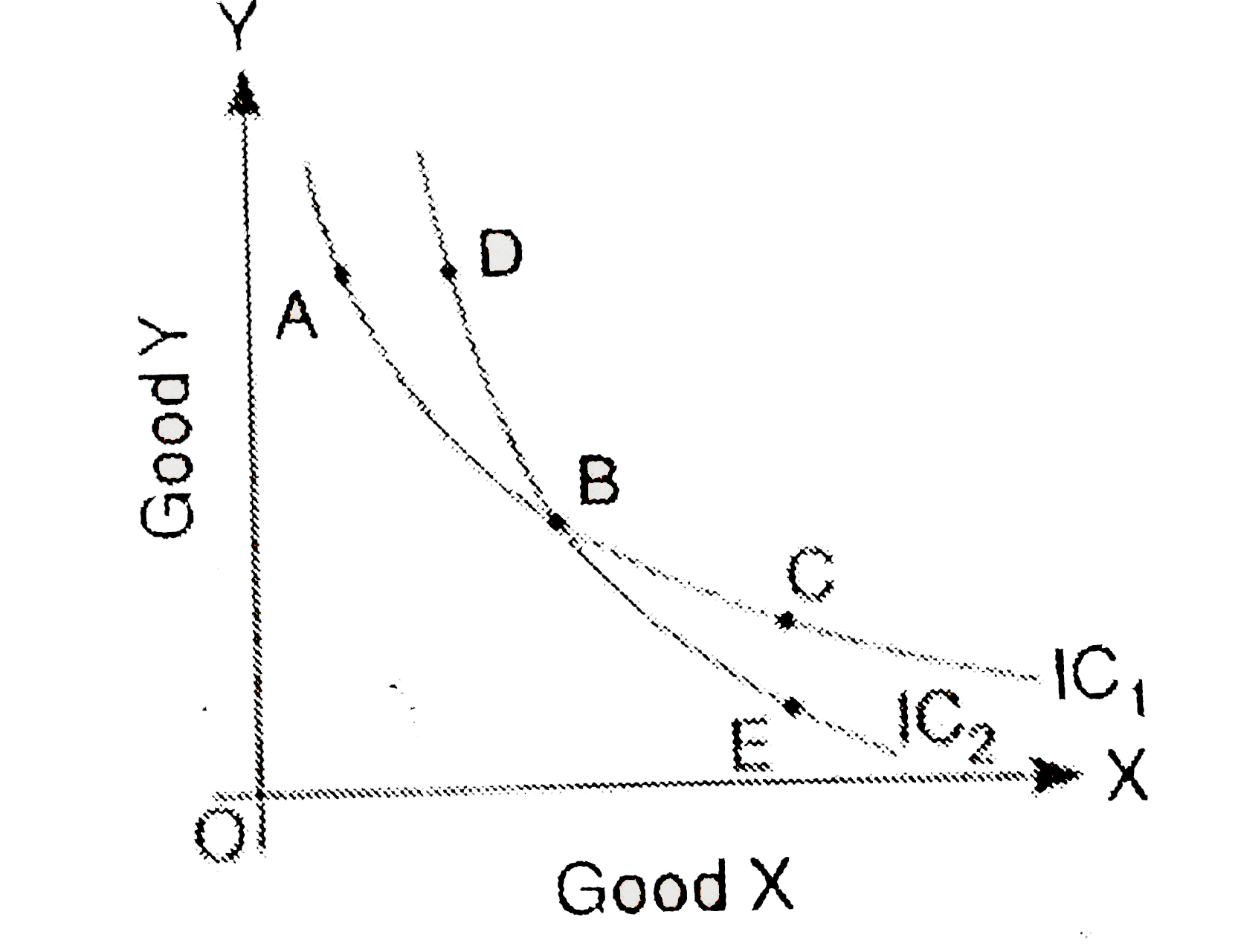Saved Bookmarks
| 1. |
Identify which of the following is not true for the Indifference Curves. Give valid reasons for choice of your answer. (a) Lower indifference curve represents lower level of satisfaction (b) Two regular convex to origin indifference curves can intersect each other. (c) Indifference curve must be convex to origin at the point of tangency with the budget line at the consumer's equilibrium. ltbr. (d) Indifference curves are drawn under the ordinal approach to consumer equilibrium |
Answer» Solution :Out of the given options. (b) is incorrect. Indifference Curves have a property that two ICs cannot intersect. Suppose, there are any two ICs INTERSECTING each other. As per the FIGURE:  `A = C ("on " IC_(1))` `D = E ("on " IC_(2))` But if we see the peculiarity of point B (the point of intersection), this would result into absurd situation of `A = C = B " & " D = C = B`, which is not possible, as they are violating the basic definition of the indifference curves. |
|
Discussion
No Comment Found
Related InterviewSolutions
- Assumption of ordinal apporch
- Critical appraisal of methods of collection of data
- Different between microeconomics and macroeconomics
- What happense when ic slops downwards
- Implications of perfect competition in forms of market
- If price of mango rises demand will ?
- What is statistical table? Explain briefly tha main characteristics of a good statistical table.
- What is production possibility curve
- Explain any three factor which affect the supply of a commodity
- What do you understand by the increasing returns to scale